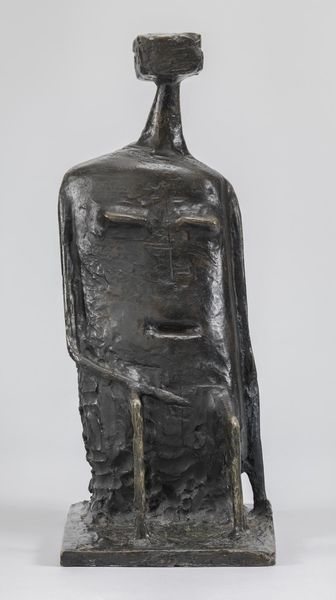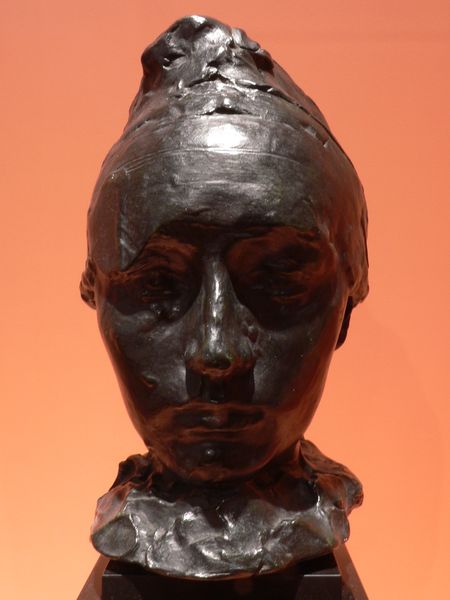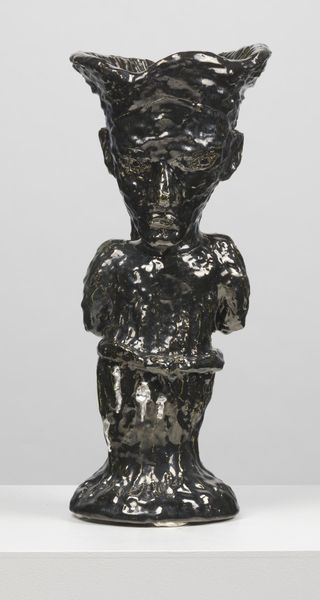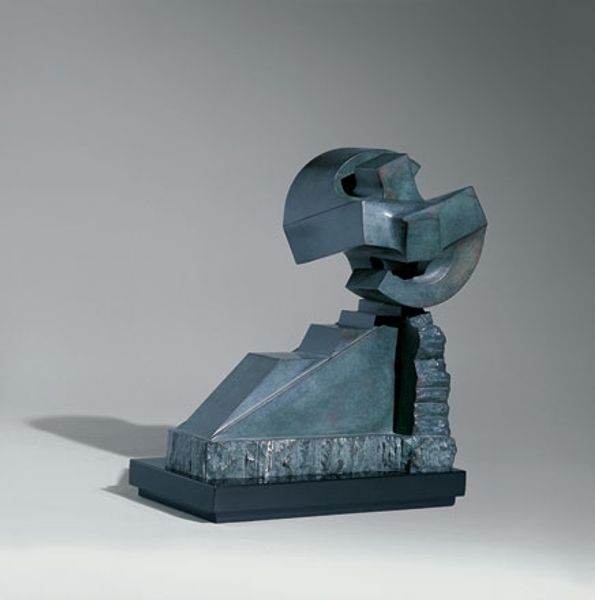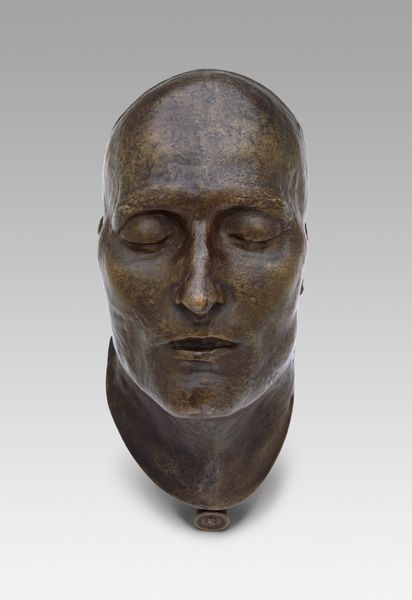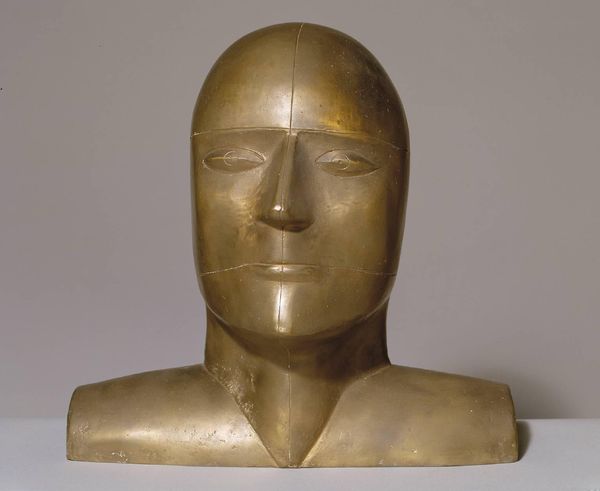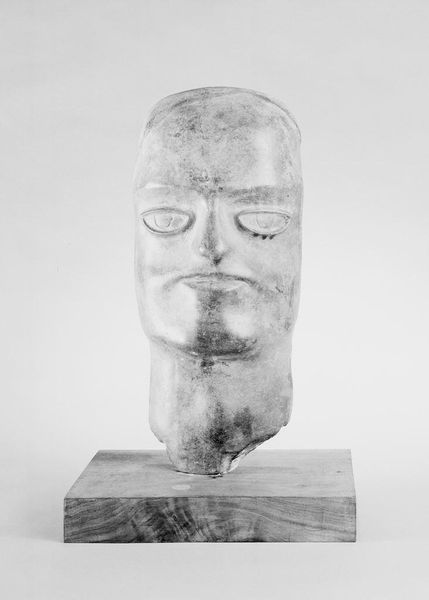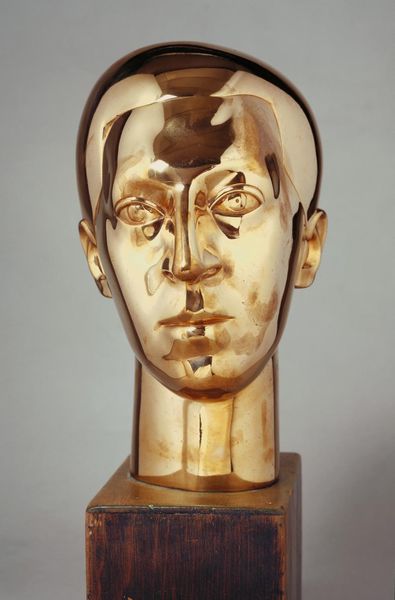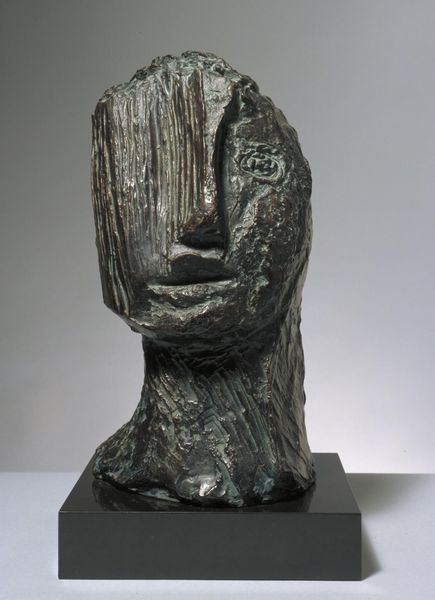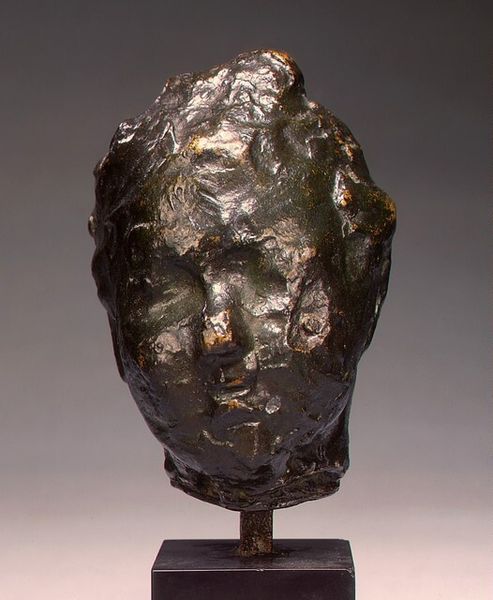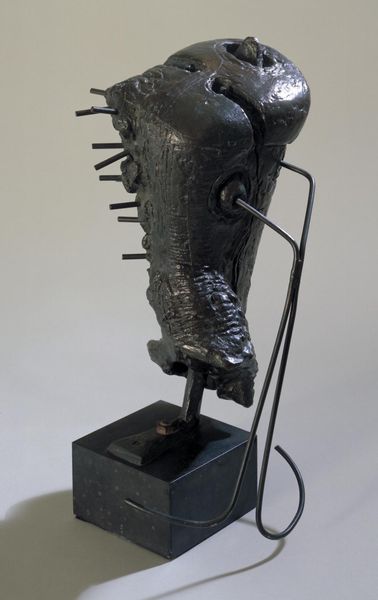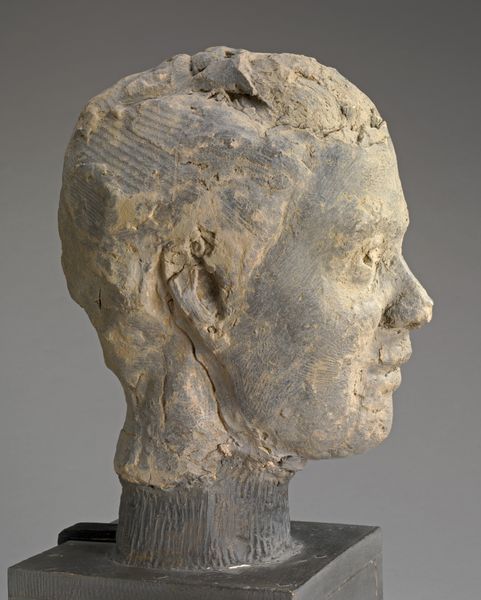
Dimensions: object: 280 x 240 x 280 mm, 0.5 kg
Copyright: © The Eduardo Paolozzi Foundation | CC-BY-NC-ND 4.0 DEED, Photo: Tate
Editor: Here we have Eduardo Paolozzi's 'Tin Head - Mr Cruikshank.' The sculpture is assembled from small tin plates, giving it a fragmented, almost robotic feel. What do you make of the use of such an industrial material? Curator: Paolozzi’s choice of tin challenges traditional sculpture. It’s not bronze or marble, but a mass-produced, readily available material. The labor involved in piecing it together and what that labor says about consumption are key here. Editor: So, you're saying the material itself is the message? Curator: Precisely! Tin speaks to post-war industrial society and its influence on identity. The process reflects fragmentation, mass production, and the artist's critical engagement with those forces. Editor: That's a perspective I hadn't considered. Curator: It’s all about the means of production, how the art was made, and what it communicates about the society that produced it. Editor: I see the work in a new light now.
Comments
tate 6 months ago
⋮
http://www.tate.org.uk/art/artworks/paolozzi-tin-head-mr-cruikshank-t06931
Join the conversation
Join millions of artists and users on Artera today and experience the ultimate creative platform.
tate 6 months ago
⋮
Historically portrait busts have celebrated an individual, but this sculpture commemorates a scientific device. It is based on the model of a human head developed at the Massachusetts Institute of Technology. For this work Paolozzi cut up tin cans into thin strips and soldered the metal together to make the bust. The subject, material and technique are all manifestations of the burgeoning technological age of the 1950s. Eduardo Paolozzi was born at Leith, near Edinburgh in 1924. He lives and works in London. Gallery label, August 2004
